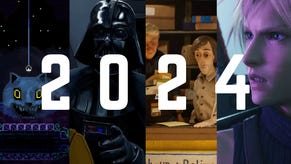Destiny 2: The Final Shape review - a fitting end for a story ten years in the telling
Subclass warfare.
Bungie sticks the landing as it finally brings together the threads of its epic first saga.
After a storytelling exercise spanning ten years, two enormous games, and one paracasual Starhorse (don't ask), Bungie has finally concluded its first Destiny saga with Destiny 2's The Final Shape expansion. The result is a surprisingly lovely experience that manages to balance the hefty demands of nostalgia, lore, and novelty.
There's a lot to get through here, as the first week-and-a-bit since release has included the main story campaign, a raid, a 12-person conclusion mission, a new subclass (Prismatic), a 2-person secret exotic activity, and the first part of a three-act episode called Echoes (episodes being the replacement for seasons – the packages which keep players going between expansions). Let's start with… story?
As the expansion opens, a universe-ending crisis looms. A host of familiar faces must set aside their differences and come together to repel the story's Big Bad and save their way of life. In this instance, the Big Bad is The Witness; a huge triangular being with silently screaming smoke for hair. The Witness embodies the consciousnesses of an entire civilisation and is trying to do away with suffering and chaos by using the Traveler to reshape reality, freezing the universe into a perfect unchanging tableau.
Summaries of the events which led to this point will vary according to the teller. Players who are mostly here for the guns and the achievements might shrug and say "Erm, it's about light versus dark?" A more advanced recap might add, "And the Light – note the capital L – is represented by a big circle, and the Darkness is represented by a big triangle. Well, it's more of a sphere and a pyramid, but I'm trying to keep it simple. Anyway, the sphere is called the Traveler and-" The most dedicated lore-keepers might sit you down for the best part of a day and talk you through every single main character as well as abstract concepts like Sword Logic.
I tend towards the simpler end of the spectrum. Individual characters or seasons might pique my interest (ask me about the guy whose soul got put into an insect and who now lives out his days inside his favourite machine gun, exacting vengeance on his foes and enjoying what I assume is Gregor Samsa's ultimate power fantasy), but I'm usually happy to follow waypoints instead of storylines, getting my kicks from the gunplay and the comfort of rerunning familiar activities once a season hits its stride. As a result, I'm a ten-year Destiny veteran, I play end-game content most seasons, yet my saga knowledge is… patchy at best.
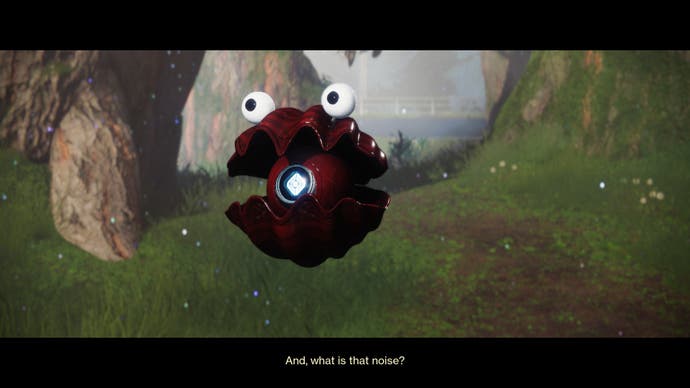
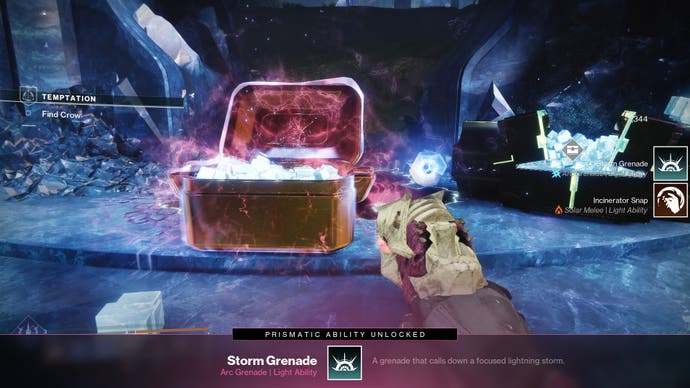
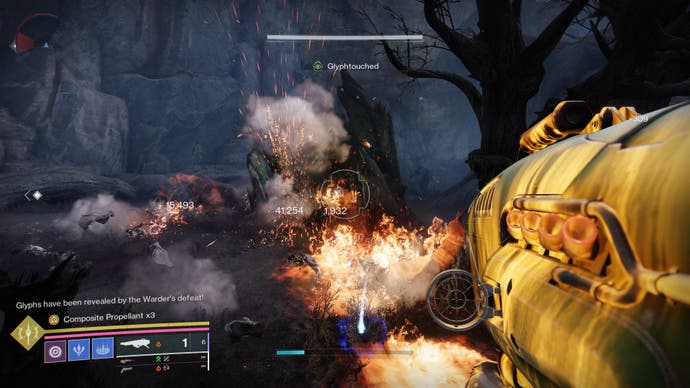
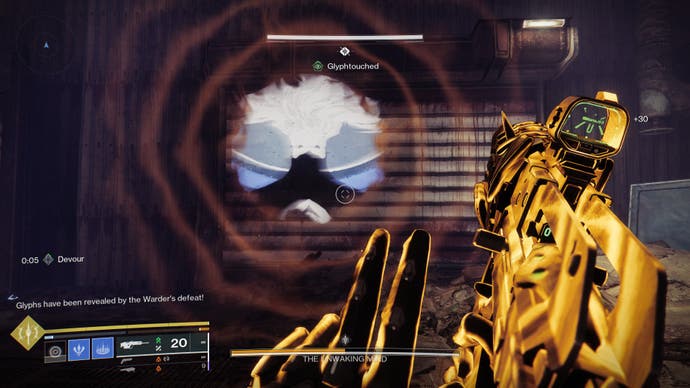
It's very helpful, then, that The Final Shape is essentially a simple tale of good versus bad, where lore knowledge adds texture and depth instead of being vital to the experience. Instead of feeling like a test for which I had not adequately revised, The Final Shape generally does a good job of reintroducing characters, situating them in the narrative, and letting these appearances accumulate to form the sense of a disparate group banding together. Total newcomers will still struggle (after all, it's trying to gloss ten years of space wizard shenanigans), but there's more than enough to orient the story ignorers (hi!) while also catering to the hardcore lore explorers.
Dialogue helps land some of the emotional beats, but the real star of the campaign is the art direction. The Traveler's inner landscape (where you'll be playing out the missions) manifests as an amalgamation of places from all over the solar system. These are the spaces where regular players will have rinsed and repeated content for hours, days, or perhaps even weeks. The little nudges of memory I got from dialogue were nothing compared to the unexpected punches of nostalgia I got when encountering familiar sights in a new location. There's a version of the giant vent fans I associate with the original game's Cosmodrome which really caught me off guard in terms of the wave of emotion it provoked, same with a particular neon sign – one which we used to use as a marker in a now-retired raid – appearing in a new context.
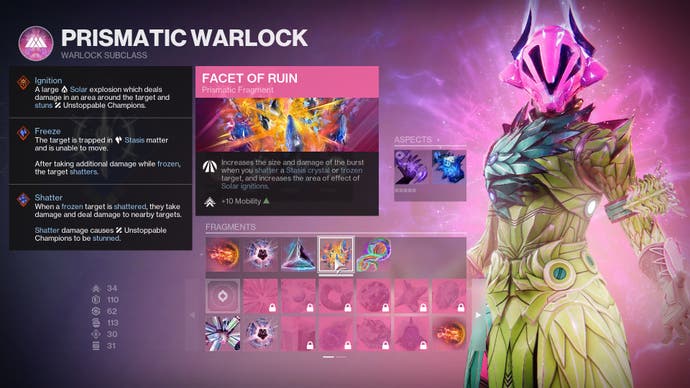
Over the course of the story, the player will unlock elements of the new Prismatic subclass; a fusion of Light and Dark abilities which allows the player to mix-and-match skills aligned to the existing subclasses and create some kind of Franken-class of their own devising. I'm currently favouring a build based around Arc grenades, a Stasis aspect called Bleak Watcher, and the Getaway Artist exotic gloves. The gloves have always let you hold your grenade button to convert an Arc grenade into a sentry turret that follows you about, but Bleak Watcher now lets you hold the grenade button to deploy a Stasis turret. The current result is two turrets for the price of one, and I'm making the most of the situation in case Bungie nerfs it into oblivion.
I have mixed feelings about the Prismatic subclass more generally. It's fun and silly and works with the story. But it also adds even more UI data to parse and track, and Destiny 2 is already a game with a real set of UI overload problems. There's a new bar on screen below your Super information which tracks your ability to Transcend. Dealing Light damage fills the left side, dealing Dark damage fills the right. When both are full, you can activate the ability, accessing a dedicated Prismatic grenade as well as some other buffs, and being able to break the immunity of specific enemies. I'll be honest here and say that it's often been one thing too many to keep an eye on. I use it when I have those Transcendent enemies to fight but, otherwise, I'd rather just keep plopping turrets down.
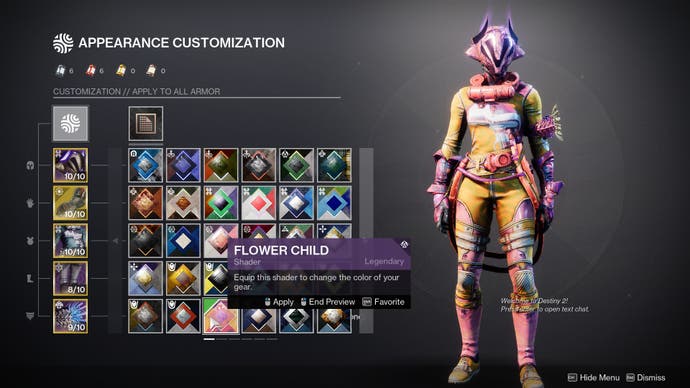
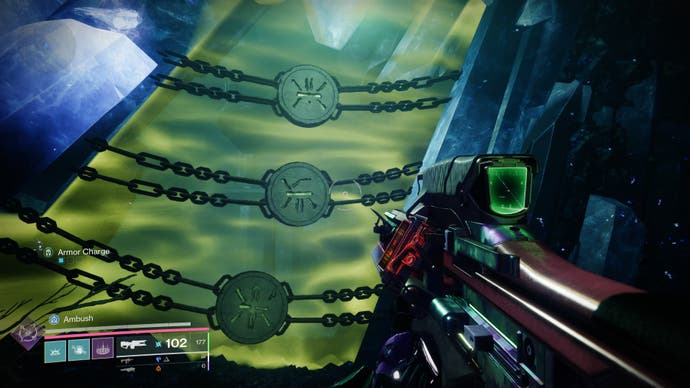

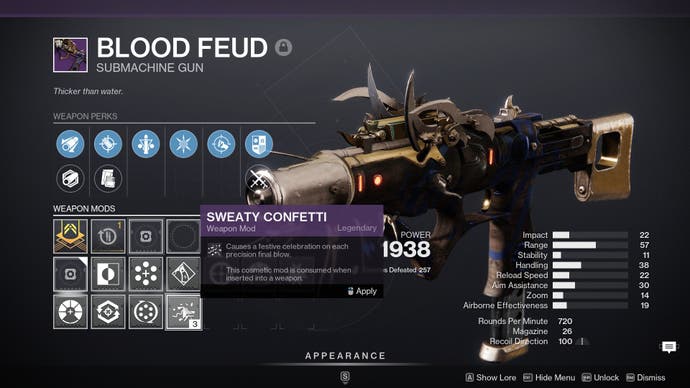
Incorporating the expansion's raid, Salvation's Edge, so closely into the main storyline means that the campaign takes you up to the Witness's doorstep, but stops short of ringing the bell. The raid then covers the efforts required to make the final climb and start biffing the Witness. Having the one feed so clearly into the other is an interesting change, although not an entirely successful one. I imagine that the dream scenario would have been to let the story campaign lead up to the raid, and then have the players use the raid to finally destroy the Witness, getting that cathartic post-raid euphoria to synchronise with the end of the saga.
But not all players raid. Raids take time and effort. They require you to have raid-ready friends or to gamble on a team of strangers being able to communicate effectively. Raids are niche end-game content, and it would be a poor business decision to gate the true end of a ten-year story behind one. The compromise we get is that the raid softens up the Witness and leaves them all but defeated, then there's a single post-raid mission which allows groups of up to twelve players to just unleash hell on the villain and finish them off. I understand the necessity of the decision, but it means the raid isn't quite a complete event in itself, and it leaves the post-raid scenario detached from the rest of the story flow. The former is less of an issue as raids tend to lose storytelling significance over time, becoming familiar – even easy – loot farms. The latter is more of a concern. To use an analogy, instead of being the cherry on top of the cake, the cherry is sitting on a little side plate next to the cake and is prone to being forgotten.
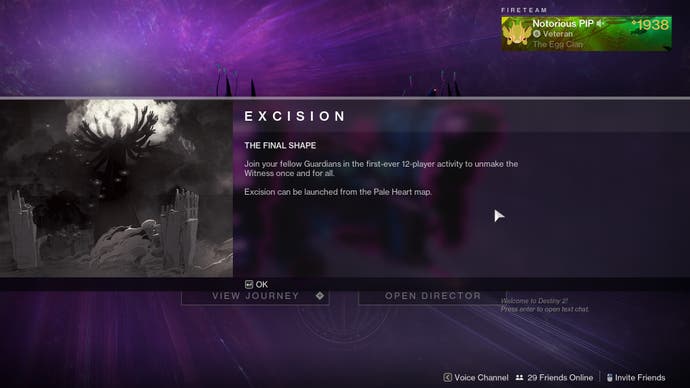
The raid itself is a tricky beast. Going in blind, the first encounters definitely took longer to crack than their equivalents from previous raids, and there's one section which is so hard to explain using just words that it's better to take an extended tea break and ask everyone to watch an explanatory video where a YouTuber slides pieces of paper around on a table. The basic ask of players is still the same, though: share information, master recurring systems, and deal with the bizarre-but-efficient naming conventions that the community/your friends come up with for various bits of space nonsense.
Far more interesting to me is Dual Destiny – a two-person activity locked behind some extra combat encounters in the expansion's main stomping ground, the Pale Heart of the Traveler. It's automatically peculiar in the Destiny universe, what with being a two-person activity, and it uses its puzzles, traversal and combat to highlight the Light versus Darkness theme of the expansion. The reward – an exotic class item with double perk rolls – is an excellent incentive to re-run the activity too.
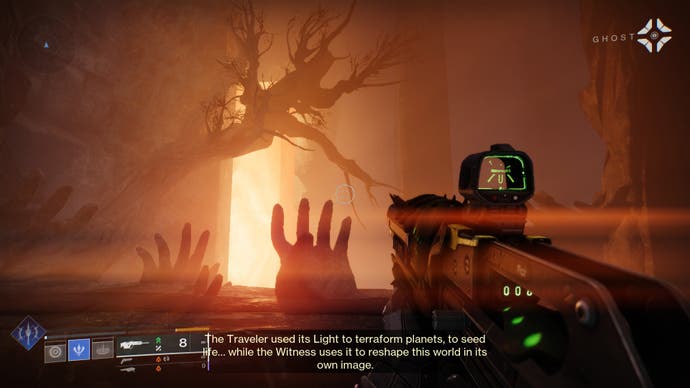
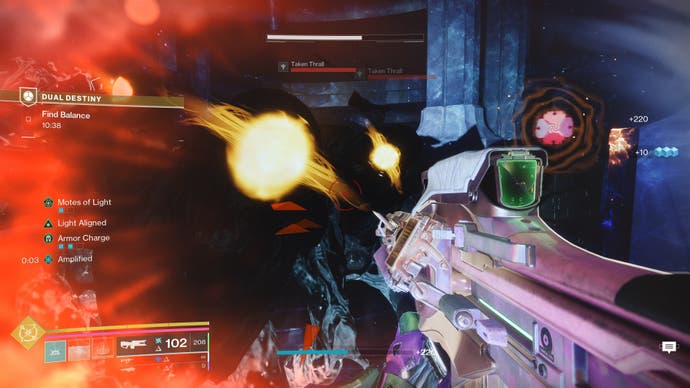
I know that solo players will be disappointed that a cool exotic item requires cooperative play, but playing through the activity with a friend, I found the cadence of Dual Destiny novel and refreshing. It's encouraging to find that feeling in such a familiar game, especially as we wait to see whether the second saga will be able to find new ground to tread.
The idea of rerunning Dual Destiny to reroll a piece of armour brings us to the main meat of the post-campaign game: the usual grind for gear, triumphs and seasonal gubbins; the rewards for exploring the new destination (the Pale Heart of the Traveler); and the drip feed of content from the episode, Echoes. Post-campaign Destiny isn't always my cup of tea because it can depend so heavily on whether you vibe with a season or the related repeatable activities. If it helps you calibrate your interests versus mine, I could play Season of the Haunted's Nightmare Containment all day, and I lavished many hours on all of the activities in Season of the Deep. I did NOT, however, get on with Ketchcrash in Season of Plunder, and I have never found my groove with anything on Neomuna.
With that in mind, roaming the Pale Heart is satisfying the Nightmare Containment craving I get, just with a strange solitary aspect as you don't get matchmade in the space. I find myself just flowing between activities and areas without needing to think too much about it. Providing just the right amount of structure for this space is the area's progression chart called the Pathfinder. The Pathfinder is just a set of bounties laid out as blobs on a grid. If you complete a bounty, you can fill in the blob. Connecting adjacent blobs from left to right creates a path across the grid and completed paths give you loot. There's no remembering to pick up bounties, no "blah blah you have reached the limit of bounties you can hold", no waiting to load into the tower again because you forgot to chat to someone about bounties. What a world!
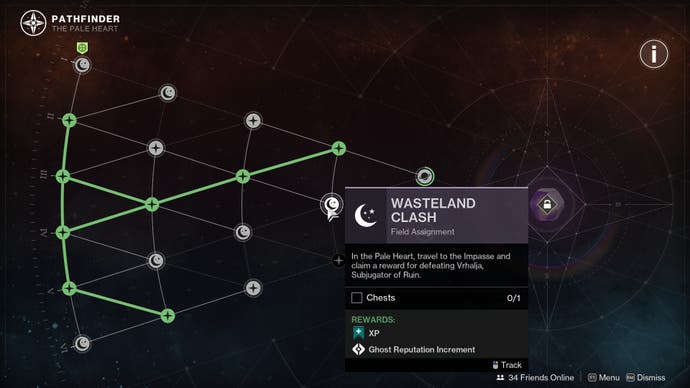
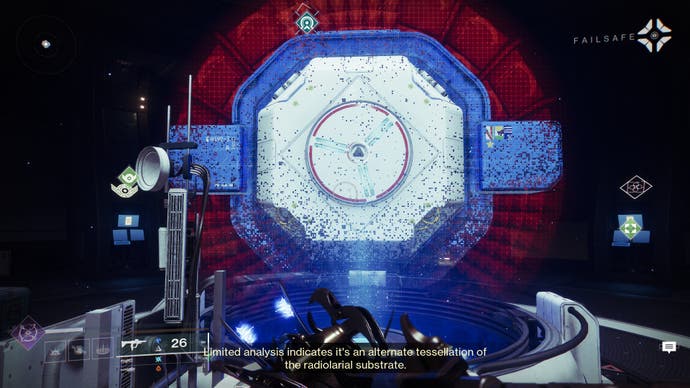
There's another Pathfinder that covers Vanguard, Crucible and Gambit playlist activities, too! Now, imagine if all the game's vendors had got that memo. Alas, we just have a new system and the old system. Remember how I said that Destiny has a UI overload problem? Yeah. And that's without even mentioning the new icon near the Pale Heart Pathfinder map icon which takes you to a set of time-limited buffs for the area called destination mods. Finding the right submenu in Destiny can be an exhausting task.
The Echoes episode's first act is the most recent drip of activities in the expansion. I'll be honest that I just flat out don't enjoy spending time with its main character Failsafe, the dual-personality AI who moves into your HELM space for the duration of the expansion – I mean, Bungie got rid of my Season of the Deep aquarium for this? I'm also not particularly into the Vex faction who are the focus of this episode, and am finding the associated activities aren't holding my attention so far, despite the sweet love story between two other long-running characters. But with two more content drops to come as part of Echoes, there's time for that to change.
Overall, The Final Shape is a fitting send-off to a story ten years in the telling, and that's no mean feat. It stutters a little at points, especially because of how the raid is integrated (or not) into the experience, and because it adds yet more on screen information and menu sub-screens to an already overloaded and navigationally unwieldy game. The Dual Destiny activity is an unexpected highlight and, alongside the success of the Pathfinder tool, underscores the fact that the game continues to grow and change, even as one era ends.
A copy of Destiny 2: The Final Shape was independently sourced for review by Eurogamer.



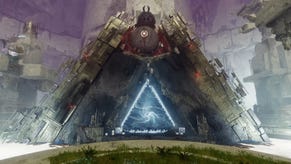


.jpg?width=291&height=164&fit=crop&quality=80&format=jpg&auto=webp)


